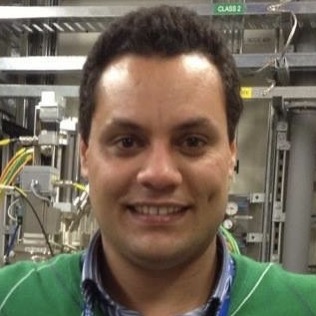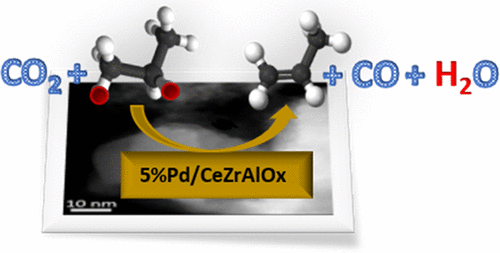A mixed oxide support containing Ce, Zr, and Al was synthesized using a physical grinding method and applied in the oxidative dehydrogenation of propane using CO2 as the oxidant. The activity of the support was compared with that of fully formulated catalysts containing palladium. The Pd/CeZrAlOx material exhibited long-term stability and selectivity to propene (during continuous operation for 140 h), which is not normally associated with dehydrogenation catalysts. From temperature-programmed desorption of NH3 and CO2 it was found that the catalyst possessed both acidic and basic sites. In addition, temperature-programmed reduction showed that palladium promoted both the reduction and reoxidation of the support. When the role of CO2was investigated in the absence of gas-phase oxidant, using a temporal analysis of products (TAP) reactor, it was found that CO2 dissociates over the reduced catalyst, leading to formation of CO and selective oxygen species. It is proposed that CO2 has the dual role of regenerating selective oxygen species and shifting the equilibrium for alkane dehydrogenation by consuming H2through the reverse water-gas-shift reaction. These two mechanistic functions have previously been considered to be mutually exclusive.


